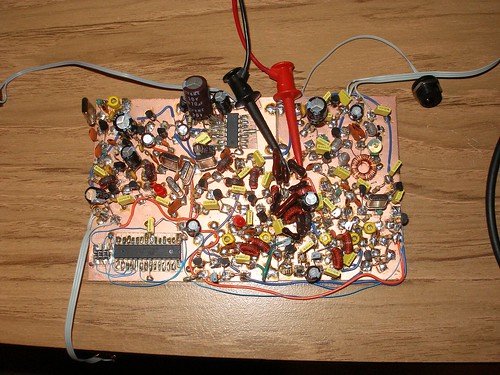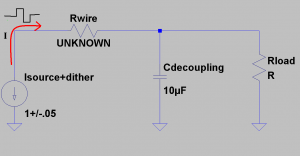In this continuing series about the electronic food chain, I thought it would be interesting to hear the perspective of someone who writes about leading edge technologies on a regular basis. We’ve already heard from an RF analog chip designer, an EDA software consultant and an electronics industry analyst. There will be more interviews to come in the future and suggestions are always welcome.
How do most engineers get information about projects they aren’t working on directly? I often hear it is from technical magazines. I have also been told by my mentors the benefit of keeping up to date on innovation that might eventually become the new standard. Just think, one day however many years ago, they were discussing WiFi in magazines–even though it was not widespread. And now it’s so standard that I’m using it for free in an airport while writing this post! The point is, keeping up on technology is important. But who gathers all this information for us to later digest?
Dr. Sunny Bains is a journalist and editor who covers many different scientific and engineering topics. You’ve probably seen some of her pieces in magazines like EEtimes, The Economist, Wired and many other large scale publications. I first found her site while looking around the internet for more writings on analog topics. She is very interested in both the use of analog information in electrical and biological systems and how these might advance computing power in the future.
Chris Gammell: What kicked off your desire to study these subjects?
Dr. Sunny Bains: Actually, the first thing I fell in love with was holography: I saw my first hologram when I was about 9 when I went to visit my dad in Canada and we took a trip to the Ontario Science Centre. They also had a laser show there, and between the two I got hooked on the technology. Science fiction also helped: I remember being inspired by various shows and movies: Star Trek, Blakes 7, Tron, 2001… Being a girl, I think I was a bit behind my male colleagues in doing actual practical stuff. A number of my male friends got their first computer when we were about 13 (ZX81). My younger brother had computers all through high school. I only got one when I had been at college for a year and decided to start a magazine about holography.
Holography took me towards lasers and optoelectronics, optical computing and signal processing, and then more widely to machine intelligence and vision.
CG: What made you decide to then pursue journalism?
SB: I always knew that writing would be part of my scientific future. I imagined myself sitting in my office doing work and writing articles when people asked me to. I don’t know why… I wasn’t a huge writer when I was in high school. But I actually started applying for science-journalism related jobs when I was still in high school.
CG: I see that you’re a lecturer and researcher at Imperial College in London . What kind of work do you target? Is it still holography?
SB: My favorite subject for some time has been neuromorphic engineering: building analog circuits with brainlike structures. However, I’m still interested in all sorts of things in the area of emerging computing technologies, machine intelligence, optoelectronics and displays.
My PhD (you can see the introductory stuff on my website) was about physical computation and embodied artificial intelligence. Basically, I’m interested in analog information, and using physics rather than digital algorithms to do processing. That theme often comes through in the writing I do these days on my blog.
CG: How about the work you do now?
SB: These days I focus on three things work wise…my company, my teaching (communication skills for engineers) and my writing. Although I will say, it’s hard to write in a recession: advertising budgets are slashed, the number of editorial pages go down, and freelancers like me are cut. Since my PhD I haven’t done any research in the science/engineering sense of actually doing my own work, just in the journalism sense of finding out what others are doing.
CG: Do you think this neuromorphic type work will lead to a singularity, a la Ray Kurzweil?
SB: I hated Ray Kurzweil’s book… you can see my review on my blog.
CG: If a student were to want to go into a field like neuromorphic engineering, should they focus on the analog side of things or the biological side of things?
SB: I think it’s MUCH more important for students to focus on analog electronics side of things. All that math is really hard, but once you’ve mastered it you can do anything. The biology you can pick up by osmosis I think. Anyway, you’re often focusing on some very small system in very great detail, and you’d have to learn all that at the time anyway. In some ways I wish I could be a neuromorphic engineer: I’ve got a fair bit of knowledge and a lot of interest. But I think being an engineer is the most important thing to make progress. That’s not to say that pure biologists don’t play a crucial role… it’s just that they can’t do much to create device: just find things/build models for the engineers to copy and, in some cases, do experiments to determine how well the engineers have done. Of course, I live in an Electrical and Electronic Engineering department, so I would say that…
CG: I’d be more interested in hearing more about your typical day, both as a publisher and a scientist. What is your typical day like?
SB: No such thing as an average day I’m afraid. From mid-September to mid-March I’m pretty busy with teaching and spend the most of the rest of my time running my company. If I’m lucky I write the odd piece if I have time. In the summer I try to work on other projects. That could be writing, research, or something for the company. This summer I’m working on a book about technical communication for engineers and physical scientists, and a new project for the company. As such, I don’t really have time to work as a scientist now; I only really did while I was doing my PhD (although that was for a long time). However, I think it’s quite likely that I’ll go back to scientific research at some stage as I tend to go back and forth between my various areas of interest.
CG: How do you first find out about the topics you write about? It seems like you often break stories that are very leading edge.
SB: I get my ideas from three main sources: conferences and other events (like one-off talks, workshops etc.), lab visits (where you just go to a lab and let them show off what they think is cool), and journals. I used to love going to the university libraries in the various cities where I lived and looking at all the new issues… Of course this is all done electronically now (no photocopying, hooray!). I’ve got some great stories by just seeing patterns in papers over a period of time. I do wish I could go back to writing regularly again. I know I could write more on my blog, but it was always supposed to be a byproduct of my freelance work, not a substitute for it.
CG: Do you have any predictions on the future of analog (since your articles are often very forward looking)?
SB: I am convinced that analog is the way to go for applications that are heavy in signal processing, and especially AI. Unlike with symbolic information, the “meaning” of signals does not always translate well into bits. Probably the story in the past that I’ve covered that exemplifies this best concerns Leon Chua’s cellular neural network. But the whole of neuromorphic engineering is built on the same idea: don’t break things into bits if you can just as easily use physics to do the computation for you.
Many thanks to Dr. Sunny Bains for taking the time to talk about her line of work. I was actually surprised when I first learned that she had so much exposure to neuromorphic engineering, a topic someone had previously suggested on the skribit portion of this site. It’s interesting how those futuristic ideas seem to dovetail with much of the analog knowledge of today; that often the most effective signal processing is still done in analog. Hopefully we’ll continue to see this trend and I’ll be able to write about it here.
If you have questions for Dr. Bains, please leave them in the comments!












